 September 3, 2020 John E. Ross, KD8IDJ, Editor
| ||||||
FCC Proposes to Institute Amateur Radio Application Fees Amateur radio licensees would pay a $50 fee for each amateur radio license application if the FCC adopts rules it proposed last week. Included in the FCC's fee proposal are applications for new licenses, renewal and upgrades to existing licenses, and vanity call sign requests. Excluded are applications for administrative updates, such as changes of address, and annual regulatory fees. The FCC proposal is contained in a Notice of Proposed Rulemaking (NPRM) in MD Docket 20-270, which was adopted to implement portions of the "Repack Airwaves Yielding Better Access for Users of Modern Services Act" of 2018 -- the so-called "Ray Baum's Act." The Act requires that the FCC switch from a Congressionally-mandated fee structure to a cost-based system of assessment. In its "[A]pplications for personal licenses are mostly automated and do not have individualized staff costs for data input or review," the FCC said in its NPRM. "For these automated processes -- new/major modifications, renewal, and minor modifications -- we propose a nominal application fee of $50 due to automating the processes, routine ULS maintenance, and limited instances where staff input is required." The same $50 fee would apply to all Amateur Service applications, including those for vanity call signs. "Although there is currently no fee for vanity call signs in the Amateur Radio Service, we find that such applications impose similar costs in aggregate on Commission resources as new applications and therefore propose a $50 fee," the FCC said. The FCC is not proposing to charge for administrative updates such as mailing address changes, and amateur radio will remain exempt from annual regulatory fees. "For administrative updates [and] modifications, which also are highly automated, we find that it is in the public interest to encourage licensees to update their [own] information without a charge," the FCC said. The FCC also proposes to assess a $50 fee for individuals who want a printed copy of their license. "The Commission has proposed to eliminate these services -- but to the extent the Commission does not do so, we propose a fee of $50 to cover the costs of these services," the FCC said. The FCC dropped assessment of fees for vanity call signs several years ago, but the Ray Baum's Act does not exempt filing fees in the Amateur Radio Service. ARRL is reviewing the matter and intends to file comments in opposition. Deadlines for comments and reply comments will be determined once the NPRM appears in the Federal Register. File comments by using the FCC's Electronic Comment Filing System (ECFS), posting to MD Docket No. 20-270. This docket is already open for accepting comments, even though deadlines have not yet been set. First Element of ARISS Next-Generation Radio System Installed and Operating on ISS The initial element of the Amateur Radio on the International Space Station (ARISS) next-generation radio system has been installed onboard the ISS, and operations using the new gear are now under way. The first element, dubbed the InterOperable Radio System (IORS), was installed in the ISS Columbus module. The IORS replaces the Ericsson radio system and packet module originally certified for spaceflight in mid-2000. "Finally! It's been a scramble the last few days with coordination over the weekend and yesterday with astronaut Chris Cassidy, KF5KDR," ARISS-US Delegate for ARRL Rosalie White, K1STO, said. "But the new ARISS radio system is now installed, set up, and functioning. What a long road we've traveled over the past 5 years!"
Initial operation of the new radio system is in FM cross-band repeater mode using an uplink of 145.99 MHz (CTCSS 67 Hz) and a downlink of 437.800 MHz. Special operations will continue to be announced, ARISS said. Launched from Kennedy Space Center last March, the IORS consists of a "space-modified" JVC-Kenwood D710GA transceiver, an ARISS-developed multi-voltage power supply, and interconnecting cables. The design, development, fabrication, testing, and launch of the first IORS culminated a 5-year engineering effort by the ARISS hardware team of volunteers. ARISS says the new system offers a higher-power radio, voice repeater, digital packet radio (APRS) capabilities, and a Kenwood VC-H1 slow-scan television (SSTV) system. A second IORS will undergo flight certification for later launch and installation in the Russian Service Module. "Next-gen development efforts continue," ARISS said. "For the IORS, parts are being procured and a total of 10 systems are being fabricated
to support flight, additional flight spares, ground testing, and astronaut training." Follow-on next-generation radio system elements include L-band repeater uplink capability -- currently in development -- and a flight Raspberry Pi, dubbed "ARISS-Pi," still in the design phase. The ARISS-Pi promises operations autonomy and enhanced SSTV operations, ARISS explained. This year, ARISS marks 20 years of continuous amateur radio operations on the ISS. The largely volunteer organization welcomes donations to the ARISS program for next-generation hardware development, operation, education, and administration. Read more. Solar Minimum Most Likely Occurred in December 2019 Sunspot Index and Long-Term Solar Observations (SILSO) in Belgium said this month that the minimum between Solar Cycles 24 and 25 "most probably" took place last December. SILSO, a part of the Royal Observatory of Belgium and formerly known as SIDC, cited as evidence the January 2020 increase in the 13-month smoothed sunspot number -- the first upswing since the Cycle 24 maximum in April 2014. "[F]or now, this latest smoothed value in January 2020 is the very first point indicating a rise of the activity. So, the date of the minimum still needs a full confirmation over the coming months," SILSO said on its website. "For now, preliminary smoothed values, limited to less than 13 SILSO said another indication of the transition between the two solar cycles can be drawn from counting individual sunspot groups that belong to either the old or new solar cycle. "While most sunspot groups belonged to the last solar cycle [Cycle 24] until September 2019, the dominance switched to groups of the new cycle in November 2019," SILSO said. SILSO said that in terms of the number of active regions, the minimum between Cycle 24 and Cycle 25 falls in October 2019. "This is close to December 2019," SILSO said. It attributes the difference to three factors: The sunspot number also takes into account the total number of spots, and the size of the emerging active regions. The time of the minimum depends on the respective trends of the declining phase of the past cycle, and of the rising phase of the new cycle, over the 12 months surrounding the minimum. The date of the minimum has a significant uncertainty range. Near minimum, activity hardly varies and is close to minimum for a few months. "The date of the minimum is thus always less sharply defined t SILSO noted "a steady stream" of small, active regions since last December, but that activity stagnated at a constant low level. "However, since July -- and even more in the course of August 2020 -- the activity seems to truly take off, with at least one sunspot group visible on almost all days. Such a level of activity had not been reached since early 2019." "This late-breaking upward trend is now expected to accelerate over the coming months," SILSO predicted. "So be prepared for a more eruptive and interesting sun!" ARRL Podcasts Schedule
The On the Air and Eclectic Tech podcasts are sponsored by Icom. Both podcasts are available on iTunes (iOS) and Stitcher (Android), as well as on Blubrry -- On the Air | Eclectic Tech. Hurricane Watch Net Logs More than 29 Hours of Continuous Operation for Laura The Hurricane Watch Net (HWN) logged 29.5 hours of continuous operation in advance of Hurricane Laura, beginning at 1300 UTC on August 26. One primary function of the HWN is to obtain real-time ground-level weather conditions and initial damage assessments from amateur radio operators in the affected area and relay that information to the National Hurricane Center (NHC) by way of WX4NHC. "Since Laura had become a Major Hurricane (Category 3) overnight, well ahead of earlier forecasts, we opened our net on both 14.325 MHz and 7.268 MHz," said HWN Manager Bobby Graves, KB5HAV. "We did this for two reasons. HF propagation was horrible on both bands, and we wanted to make sure anyone trying to contact us would be able to do so." "In many ways, Laura seemed similar to Hurricane Michael in 2018, as it rapidly intensified close to landfall, nearly becoming a Category 5 hurricane," Graves said. "Additionally, with major hurricanes, you normally have a few eye-wall replacement cycles. I don't recall there ever being one [with Laura], and meteorologists I know agree." Graves noted that on Wednesday afternoon, forecasters at the NHC used a phrase not typically heard, in order to get a point across -- "unsurvivable storm surge." The ominous prediction certainly caught on with the media and was widely repeated. "Given the terrain for the projected impact of Laura, the storm surge was expected to move well inland, as far as 40 miles, with depths as high as 15 to 20 feet in some areas," he said. Throughout its more than 29 hours of operation, the HWN collected and forwarded numerous surface reports to the NHC. Graves said that Emergency Management in Louisiana checked in with the net on 14.325 MHz to announce its presence on 7.255 MHz. "After Laura was downgraded to a tropical storm, we shifted gears and Graves expressed his appreciation to other stations for moving aside for the net to use 14.325 and 7.268 MHz. Graves noted that the forecast for this year's hurricane season is reminiscent to that of 2005, when Hurricane Katrina struck. "It is forecast to be a very busy season," he said. "When it comes to hurricane seasons, never drop your guard." Families should have plans in place ahead of a major storm, and factor the COVID-19 pandemic into those plans, he advised. Read more. Historic Winlink Gateway KH6SP Ceases Operation The last amateur radio digital gateway -- KH6SP -- at the Navy site in Wahiawa, Hawaii, went silent on August 1. The site housed two amateur radio gateways donated by a group of Hawaii amateurs led by Thomas Overman, W2AIT -- KH6UL and KH6SP. For more than 8 years, Overman maintained the Winlink software running them. The system had high-gain log-periodic arrays with low-angle radiation that provided the maritime community with email service across the Pacific and later handled inter-island traffic. Station trustee Gus MacFeeley, NH7J, introduced and demonstrated the stations to local amateur radio operators 5 years ago, pointing to the future of amateur radio digital The US Department of Homeland Security took possession of the site a few years ago and is now extending its intergovernmental use. All of the antenna quadrants are now needed by the government, including SHARES Winlink. Since MacFeeley introduced the Hawaii amateur radio community to Winlink, the Hawaii network has grown to five HF gateways providing inter-island communication, and 18 VHF gateways serving local communities. More are planned. During the past few years, the cost of interfacing amateur equipment to Winlink has dropped significantly with the development of PC software sound card modems, which can rival the performance of PACTOR modems. "We can expect to see an explosion of applications in the future making amateur radio increasingly relevant to our communities," said ARRL Pacific Section Manager Joseph Speroni, AH0A, as he bid "a fond farewell to KH6UL and KH6SP and the group of amateurs that started this revolution in Hawaii." -- Thanks to ARRL Pacific Section Manager Joe Speroni, AH0A The K7RA Solar Update Tad Cook, K7RA, Seattle, reports: No sunspots have appeared for the past 12 days. We're all hoping for more sunspots, and I'm sure they'll return soon. The trends for this newly awakening solar cycle seem to favor it. The autumnal equinox on September 22 should favor worldwide HF propagation.
Geomagnetic indicators showed quite a bit more activity than they have in some time now. Average daily planetary A index rose from 5.1 to 13.1. The most active day was August 31, when the planetary A index reached 26. The cause was a vigorous solar wind spewing from holes in the solar corona. A solar flux of 70 is forecast for every one of the next 45 days. The predicted planetary A index is 10 on September 3; 5 on September 4 - 17; 8 on September 18 - 19; 5 on September 20 - 22; 8, 10, and 14 on September 23 - 25; 10 on September 26 - 27; 12 and 10 on September 28 - 29, and 5 on September 30 - October 17. Sunspot numbers for August 27 - September 2 were 0, 0, 0, 0, 0, 0, and 0, with a mean of 0. The 10.7-centimeter flux was 70, 70.1, 70.2, 70, 69.2, 69.5, and 68.3, with a mean of 69.6. Estimated planetary A indices were 8, 10, 14, 9, 26, 16, and 9, with a mean of 13.1. Middle latitude A index was 7, 8, 14, 8, 19, 16, and 8, with a mean of 11.4. A comprehensive K7RA Solar Update is posted Fridays on the ARRL website. For more information concerning radio propagation, visit the ARRL Technical Information Service, read "What the Numbers Mean...," and check out K9LA's Propagation Page. A propagation bulletin archive is available. For customizable propagation charts, visit the VOACAP Online for Ham Radio website. Share your reports and observations. Just Ahead in Radiosport
See the ARRL Contest Calendar for more information. For in-depth reporting on amateur radio contesting, subscribe to The ARRL Contest Update via your ARRL member profile email preferences. Launch of Satellites Carrying Ham Radio Payloads Postponed Again The scheduled September 2 launch of three satellites carrying amateur radio payloads from the European Space Agency Spaceport in Korou, French Guiana, was postponed again because a typhoon was threatening a tracking station in South Korea. The launch of the Arianespace Vega vehicle will be rescheduled for later this month. The Vega is set to carry a total of 53 satellites into orbit. AMSAT-France Chair Christophe Mercier said in an AMSAT-BB post that the AmicalSat, UPMSat-2, and TTU100 satellites will carry ham radio payloads.
The AmicalSat CubeSat was built by students at the Grenoble University Space Center (CSUG). "The measurements made by the satellite will be available to all," Mercier said. "They will allow radio amateurs to use them for propagation predictions." He said AMSAT-F supported the AmicalSat project. Software for Linux and Windows platforms is available for decoding the telemetry and posting it to the SatNOGS database. According to the AmicalSat website, the CubeSat will focus on space weather, monitoring the auroral oval, and photographing the aurora. "Scientifically, the data will be used to reconstruct the flux of particles coming into the atmosphere, especially the electrons in the range of 20 eV - 10 keV," the website said. AmicalSat will transmit 1,2k AFSK on 436.1 MHz (as RS17S), and 1,000k GFSK on 2.415.3 MHz. Reports are welcome via email. UPMSat-2, a project of the Polytechnic University of Madrid, will transmit 1,2k AFSK on 437.405 MHz (as UPMST2). TTU100 (Hämarik), a project of Tallinn (Estonia) University of Technology, will transmit 1,2k and 9,6k AFSK and CW on 435.450 MHz (primary) and 62.5 kbs and 20 Mbs OQPSK on 10,465 MHz (secondary). Announcements
2016 ARRL International Humanitarian Award Co-Recipient Richard Darling, AH7G, SK The co-recipient of the 2016 ARRL International Humanitarian Award Richard Darling, AH7G, of Keaau, Hawaii, died on August 19. An ARRL Life Member, he was 86 and had been a radio amateur for 67 years. Richard and his wife Barbara, NH7FY, shared the 2016 ARRL International Humanitarian of the Year Award. The award was
conferred on the couple for having provided support in the form of money and materials that included books, food, clothing, sanitary supplies, and equipment such as hardware, antennas, and solar panels sent to the Federated States of Micronesia (FSM). The couple also regularly purchased, packed, and mailed "care packages" to Yap, containing food, clothing, medical supplies, diapers, and other items not otherwise easily available to FSM islanders. Richard Darling attended Newark College of Engineering in New Jersey and Capital Radio Engineering Institute, and then joined IBM as an electronics technician. During a duty tour in the US Army, he was in the Nike missile program and spent a lot of time on the air from Fort Bliss, Texas. He later worked for Lockheed. Over the years, Richard and Barbara provided weather warnings prior to several typhoons, most recently Maysak and No'ul, keeping communications going in the aftermath of storms. -- Thanks to Assistant Hawaii Section Manager Bob Schneider, AH6J In Brief...
Upcoming ARRL Section, State, and Division Conventions Note: Many conventions and hamfests have been canceled or postponed due to the coronavirus pandemic. Check the calendar of canceled events on the ARRL website.
Find conventions and hamfests in your area. ARRL -- Your One-Stop Resource for . .
Subscribe to...
Free of charge to ARRL members...
| ||||||
.jpg) NPRM, the FCC proposed application fees for a broad range of services that use the FCC's Universal Licensing System (ULS), including the Amateur Radio Service that had been excluded by an earlier statute. The new statute excludes the Amateur Service from annual regulatory fees, but not from application fees.
NPRM, the FCC proposed application fees for a broad range of services that use the FCC's Universal Licensing System (ULS), including the Amateur Radio Service that had been excluded by an earlier statute. The new statute excludes the Amateur Service from annual regulatory fees, but not from application fees.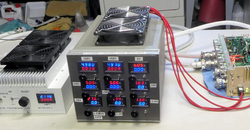
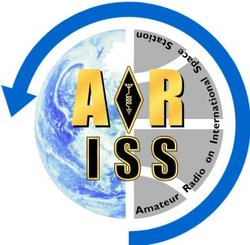
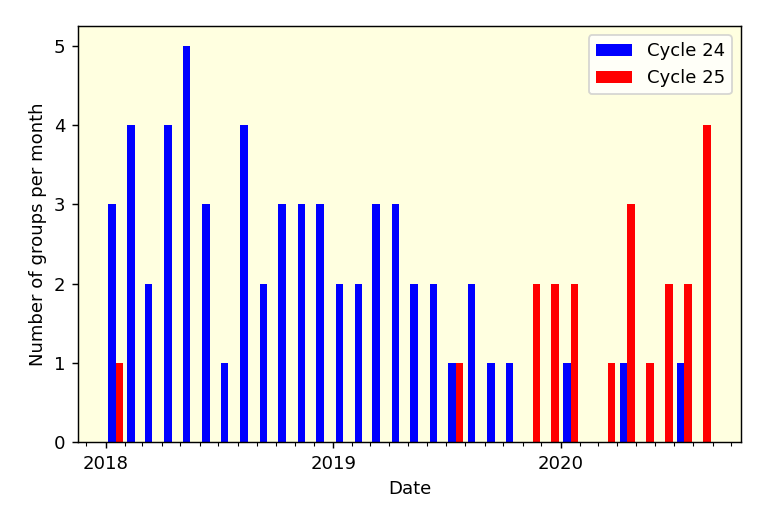 months, hint at increasing values over coming months. If the rising trend indeed continues, this [December 2019] date will become fully definitive."
months, hint at increasing values over coming months. If the rising trend indeed continues, this [December 2019] date will become fully definitive." han the date of the maximum of the cycles, which are more sharply peaked," SILSO explained.
han the date of the maximum of the cycles, which are more sharply peaked," SILSO explained..jpg) The latest episode of the On the Air podcast (Episode 8) features an interview with brothers Andy, KK4LWR, and Tony, KD8RTT, Milluzzi about the ARRL Collegiate Amateur Radio Initiative. The On the Air podcast is a monthly companion to On the Air magazine, ARRL's magazine for beginner-to-intermediate ham radio operators.
The latest episode of the On the Air podcast (Episode 8) features an interview with brothers Andy, KK4LWR, and Tony, KD8RTT, Milluzzi about the ARRL Collegiate Amateur Radio Initiative. The On the Air podcast is a monthly companion to On the Air magazine, ARRL's magazine for beginner-to-intermediate ham radio operators..jpg) The latest episode of the Eclectic Tech podcast (Episode 15) features a chat with Bob Allison, WB1GCM, about HF transceiver shopping -- getting the best performance for the money.
The latest episode of the Eclectic Tech podcast (Episode 15) features a chat with Bob Allison, WB1GCM, about HF transceiver shopping -- getting the best performance for the money..jpg) Graves said it strained resources, but the net was able to get its job done. The HWN remained in continuous operation until Thursday, August 27, at 1830 UTC, well after Hurricane Laura made landfall in Louisiana, near the Texas border.
Graves said it strained resources, but the net was able to get its job done. The HWN remained in continuous operation until Thursday, August 27, at 1830 UTC, well after Hurricane Laura made landfall in Louisiana, near the Texas border.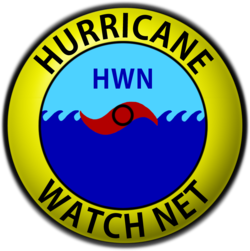 began asking for post-storm reports from those affected by Laura," Graves recounted. "We also called for emergency or priority traffic."
began asking for post-storm reports from those affected by Laura," Graves recounted. "We also called for emergency or priority traffic."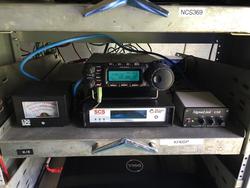 mode emergency communications in the Pacific Section. MacFeeley handled necessary on-site work. The multi-node operation provides continuous Winlink/Winmor service across the Pacific Ocean for many maritime mobile stations that have come to rely on it as their critical link to the world.
mode emergency communications in the Pacific Section. MacFeeley handled necessary on-site work. The multi-node operation provides continuous Winlink/Winmor service across the Pacific Ocean for many maritime mobile stations that have come to rely on it as their critical link to the world.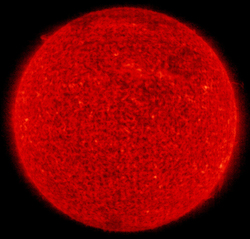 Average daily solar flux declined over the August 27 - September 2 reporting week, from 70.4 to 69.6.
Average daily solar flux declined over the August 27 - September 2 reporting week, from 70.4 to 69.6..jpg)
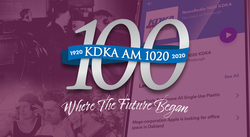 A ham radio special event during November will celebrate the 100th anniversary of Pittsburgh's KDKA as the first commercial radio broadcast station. Using both temporary call sign 8ZZ and KDKA (because the KDKA license had not arrived in time), the station broadcast the 1920 presidential election results. Many Pittsburgh area amateur radio clubs will participate. Look for special event call signs K3K, K3D, W8XK, and K3A (check
A ham radio special event during November will celebrate the 100th anniversary of Pittsburgh's KDKA as the first commercial radio broadcast station. Using both temporary call sign 8ZZ and KDKA (because the KDKA license had not arrived in time), the station broadcast the 1920 presidential election results. Many Pittsburgh area amateur radio clubs will participate. Look for special event call signs K3K, K3D, W8XK, and K3A (check 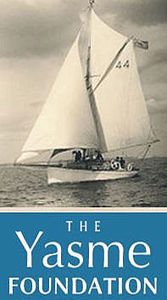 The YASME Foundation Board of Directors has awarded a grant to
The YASME Foundation Board of Directors has awarded a grant to 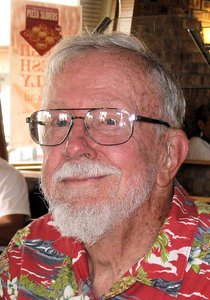
.jpg) The 2020 ARRL/TAPR Digital Communications Conference (DCC) on September 11 - 12 will be streamed live on YouTube. No registration is needed; the URL will be announced via the TAPR website. The
The 2020 ARRL/TAPR Digital Communications Conference (DCC) on September 11 - 12 will be streamed live on YouTube. No registration is needed; the URL will be announced via the TAPR website. The .png) Scouting's Jamboree on the Air (
Scouting's Jamboree on the Air (.jpg) 4U1UN has been active and ready to make contacts on 60 meters (5357 kHz). Some 400 contacts in about 30 DXCC entities were made on FT8 on 5 MHz earlier this week. Pending unforeseen events, such as equipment failure or difficulties accessing the station, activity on 60 meters will continue, said Adrian Ciuperca, KO8SCA. 4U1UN is running about 35 W on 60 meters on FT8. 4U1UN may also operate CW on 5373 kHz. Activity could start around 2300 UTC. QSL via HB9BOU. -- Thanks to
4U1UN has been active and ready to make contacts on 60 meters (5357 kHz). Some 400 contacts in about 30 DXCC entities were made on FT8 on 5 MHz earlier this week. Pending unforeseen events, such as equipment failure or difficulties accessing the station, activity on 60 meters will continue, said Adrian Ciuperca, KO8SCA. 4U1UN is running about 35 W on 60 meters on FT8. 4U1UN may also operate CW on 5373 kHz. Activity could start around 2300 UTC. QSL via HB9BOU. -- Thanks to 







